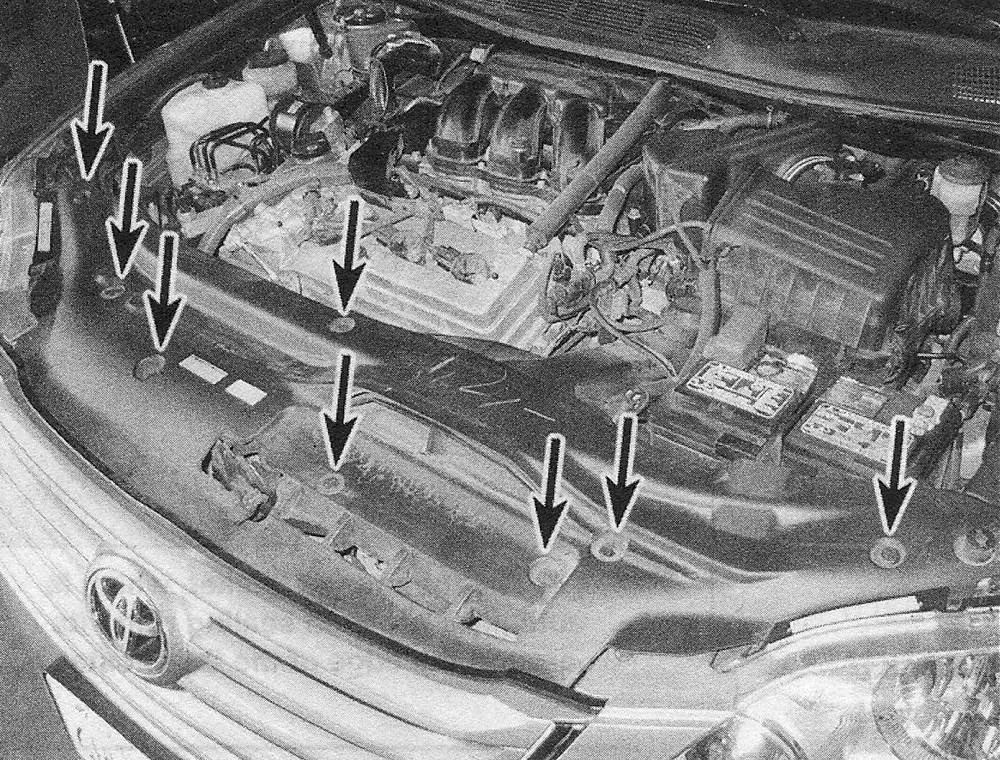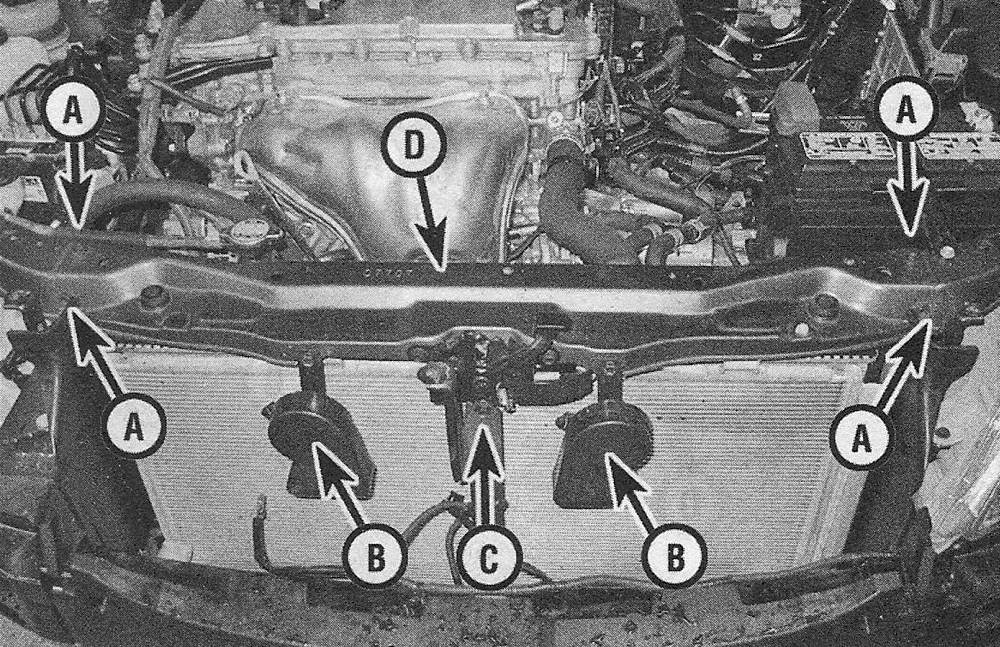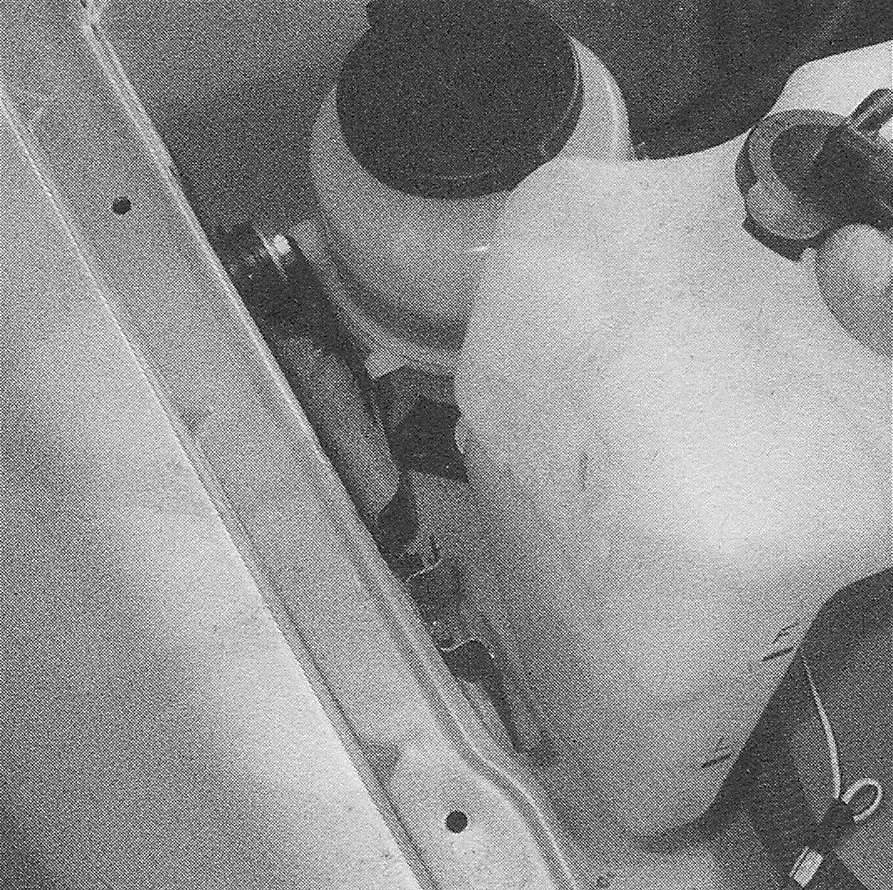Radiator and coolant reservoir — removal and installation
Warning: Wait until the engine is completely cool before beginning this procedure.
Warning: Do not allow antifreeze to come in contact with your skin or painted surfaces of the vehicle. Rinse off spills immediately with plenty of water. Antifreeze is highly toxic if ingested. Never leave antifreeze lying around in an open container or in puddles on the floor; children and pets are attracted by its sweet smell and may drink it. Check with local authorities on disposing of used antifreeze. Many communities have collection centers, which will see that antifreeze is disposed of safely. Never dump used antifreeze on the ground or into drains.
Radiator Removal
1. Disconnect the cable from the negative battery terminal (see Engine electrical systems).
2. Raise the front of the vehicle and sup- port it securely on jack stands, then remove the lower engine covers and the lower inner fender corner splash shield (s).
3. Drain the cooling system (see Tune-up and routine maintenance).
4. Detach the upper and lower radiator hoses from the radiator.
5. Disconnect the reservoir hose from the radiator filler neck.
6. Remove the upper engine covers (and on V6 models, remove the engine seal cover clips and seal), then remove the air inlet assembly fasteners and air inlet (see illustration).
6.6 Remove the hood seal clips and hood seal

7. Remove the air cleaner inlet duct (see Fuel and exhaust systems).
8. Remove the front bumper (see Body).
9. Disconnect the electrical connectors to the horns, and remove the hood latch support mounting fasteners and the radiator support (see illustration).
6.9 Radiator support mounting details — four-cylinder shown, V6 similar
A Radiator support fastener
B Horns
C Hood latch
D Radiator support

10. Remove the radiator support mounting fasteners and lift the support out.
11. If equipped with an automatic transaxle, disconnect the cooler lines from the radiator. Place a drip pan to catch the fluid and cap the fittings.
12. Remove the condenser mounting fasteners (see Air conditioning condenser — removal and installation) and wire the condenser up to prevent it from falling once the radiator is removed.
13. Lift out the radiator and fan shroud assembly. Be aware of dripping fluids and the sharp fins. Separate the fan/shroud from the radiator (see Engine cooling fans — removal and installation).
14. With the radiator removed, it can be inspected for leaks, damage and internal blockage. If in need of repairs, have a professional radiator shop perform the work, as special techniques are required.
15. Bugs and dirt can be cleaned from the radiator with compressed air and a soft brush. Don’t bend the cooling fins as this is done. Warning: Wear eye protection.
Installation
16. Installation is the reverse of the removal procedure. Be sure the rubber mounts are in place.
17. After installation, refill the cooling system (see Tune-up and routine maintenance).
18. Start the engine and check for leaks. Allow the engine to reach normal operating temperature, indicated by the upper radiator hose becoming hot. Recheck the coolant level and add more if required.
19. On automatic transaxle equipped models, check and add fluid as needed (see Tune-up and routine maintenance).
Coolant reservoir removal and installation
20. On most models, the coolant reservoir simply pulls up and out of the bracket on the fender well (see illustration).
6.20 Pull the coolant reservoir up and out of its bracket to remove it

21. Pour the coolant into a container. Wash out the reservoir and inspect it for cracks and chafing. Replace it if damaged.
22. Installation is the reverse of removal.